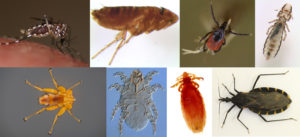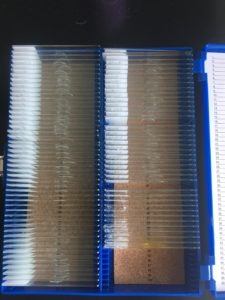Big data on parasites takes big leap forward
Texas A&M AgriLife joins effort to digitize North American parasite collections
Parasites are more than just bites and stings – as vectors of diseases like malaria, Lyme disease and West Nile Virus, they play important roles in human, wildlife and livestock health. A new initiative created by the National Science Foundation will collect “big data” to better understand the behaviors of parasites in North America, and now Texas A&M AgriLife has joined this effort.
It can be difficult for researchers to accurately understand how parasites are distributed across regions, what hosts they feed on and what diseases they may carry. Often, researchers try to use information from specimens in natural history museums, but these specimens and accompanying data may not be easily accessible, possibly tucked away in vials or microscope slides scattered all across the country. But that’s all about to change.

Texas A&M is collaborating with more than 25 institutions to digitize more than 1.3 million parasites as part of a $4.3 million National Science Foundation grant led by Purdue University and the Milwaukee Public Museum.
Ticks, mosquitoes and mites are all part of this arthropod specimens initiative, and now the Texas A&M Department of Wildlife and Fisheries Sciences and Department of Entomology, both part of the College of Agriculture and Life Sciences, are rallying to share, digitize and contribute their information to this effort called the Terrestrial Parasite Tracker.

Jessica Light, Ph.D., associate professor, says Texas A&M will digitize more than 175,000 specimens from collections in the Biodiversity Research and Teaching Collections and the Texas A&M Insect Collection, part of the Department of Entomology.
“In this case, digitization is making database information for terrestrial parasites available online to facilitate advances in research,” Light said. “Texas A&M is one of the larger collections participating in this initiative.”
By bringing together so many institutions across the nation, the initiative hopes to support research that shows change over time in the distribution and behavior of parasites. It will become a big data collection that will advance scientific discovery in many areas — from entomology to wildlife research, and from human to animal health.
“This will facilitate research we haven’t even thought of yet,” Light added. “Additionally, distributions of terrestrial parasites and the pathogens they carry may shift over time and affect new populations of people and animals. Having digitized and accessible parasite data will help researchers better address questions related to disease dynamics and untold new questions about terrestrial parasites.”
For information about how you can submit parasites to Texas A&M collections, contact Jessica Light.


